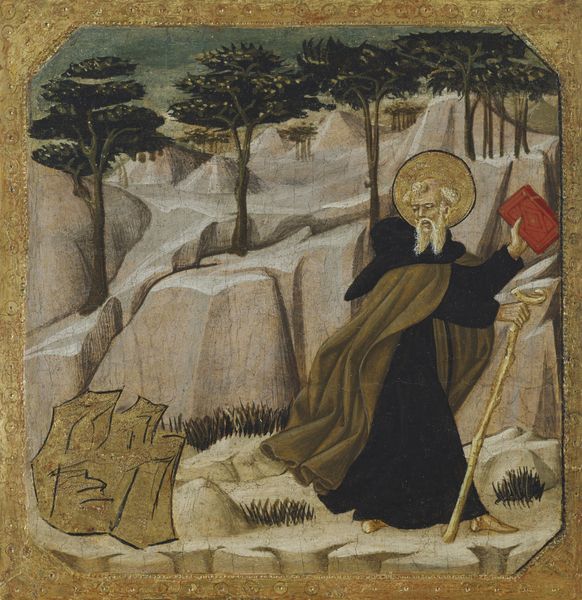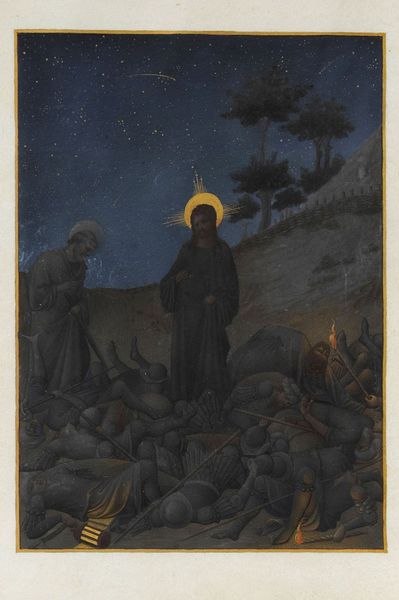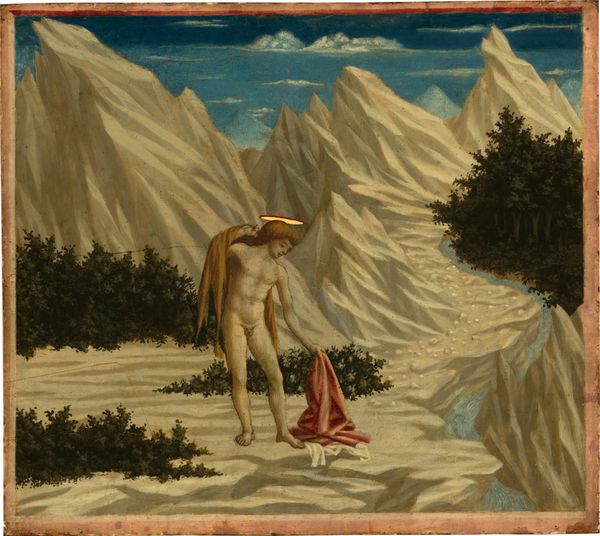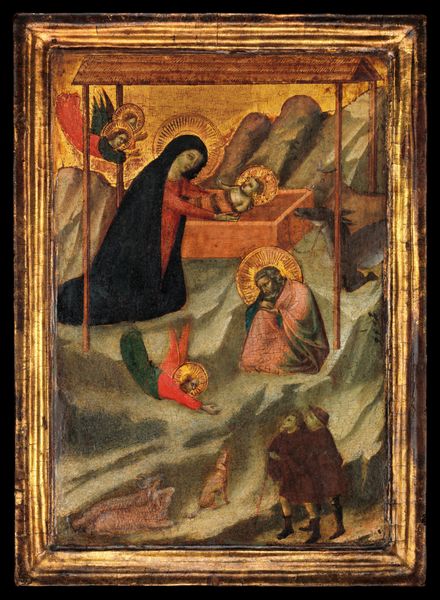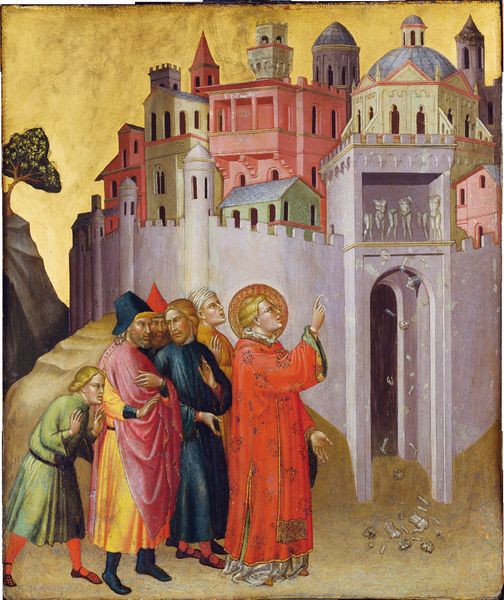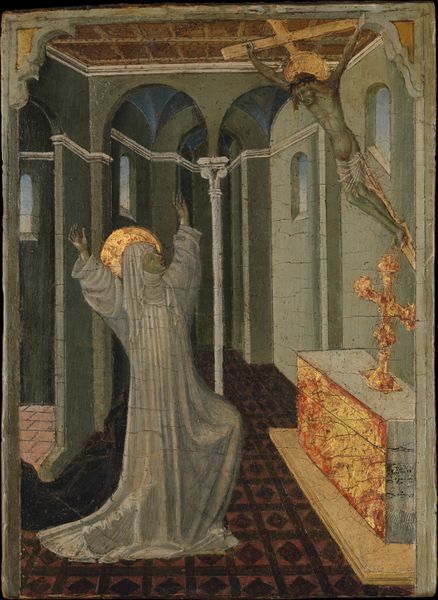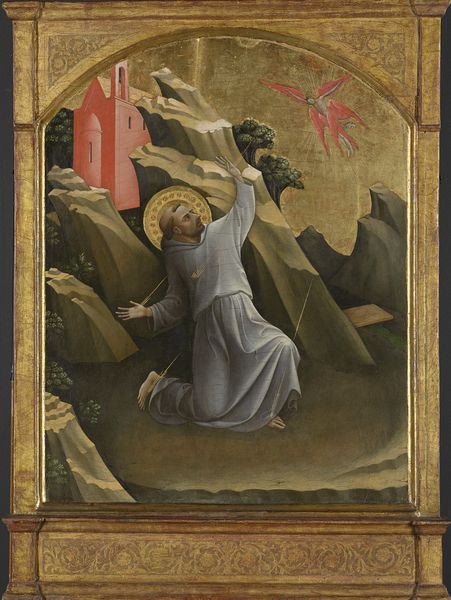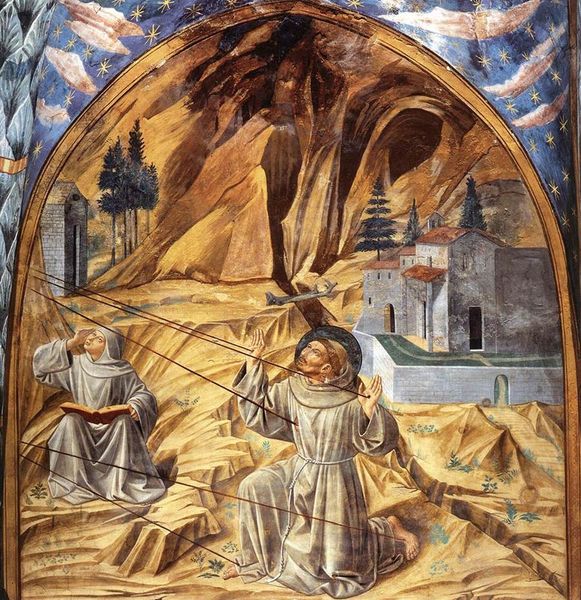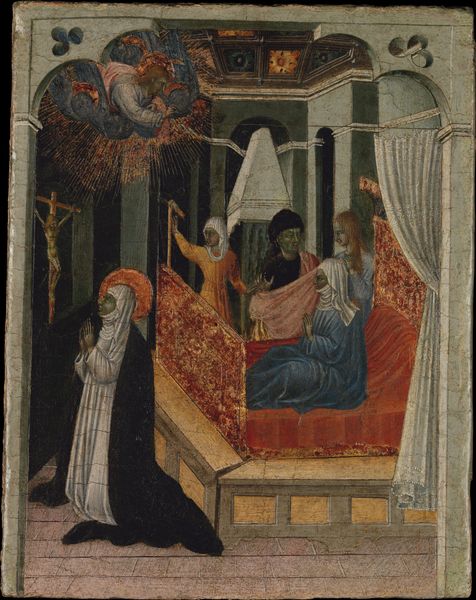
Saint Anthony the Abbot in the Wilderness 1432 - 1438
0:00
0:00
#
toned paper
#
water colours
#
landscape
#
handmade artwork painting
#
coffee painting
#
naive art
#
painting painterly
#
watercolour bleed
#
watercolour illustration
#
mixed media
#
watercolor
Dimensions: Overall: 18 3/4 × 13 5/8 in. (47.6 × 34.6 cm)
Copyright: Public Domain
Curator: Looking at this piece, I’m immediately struck by the somber yet oddly peaceful mood. There's a sense of solitude here, and a palette that's muted and earthy. Editor: This is “Saint Anthony the Abbot in the Wilderness,” believed to be painted between 1432 and 1438 by the Osservanza Master. We can find it here at the Met. It's a watercolour and mixed media piece on toned paper. Curator: Toned paper, you say? I can feel that in the whole mood, can't I? That lends the painting a wonderful, almost ghostly quality. Like an old memory brought to life with sepia tones and watercolour bleeds. Tell me more. What wilderness are we even talking about? Editor: Well, St. Anthony was a very important figure in the early church, one of the fathers of monasticism. His 'wilderness' wasn't just geographic; it was spiritual. The artwork likely alludes to the narratives in "The Life of Saint Anthony," written by Athanasius of Alexandria, which detail St. Anthony's retreat into the Egyptian desert to pursue a life of asceticism and resist temptation. The landscape here functions almost like a stage setting for his spiritual trials. Curator: I notice the eerie uniformity of the leafless trees, which creates a feeling of desolate repetition. I also think it’s kind of refreshing that it almost seems like 'Naive art', so far from Renaissance bombast we expect to find during those times. The path almost acts as a mirror to his spiritual progress, don’t you think? It looks lonely. And the use of color, this restraint is beautiful. What I also want to say is, is that an actual castle and a church steeple far off into the background? Editor: It is indeed! Think of the late Medieval fascination with narrative. These details pull you into Anthony’s world, the world that formed the spiritual life of an anchorite saint. Also remember, the image itself serves didactic purposes. Such narrative and painterly works were instrumental in popularising hagiographies during this period, especially within the monastic orders like the Antonines who venerated the Saint. Curator: I get such a visceral feeling looking at the watercolour, I must say. Thinking of Anthony making peace, coming face-to-face, coming to terms, finding what he needed, in that barren landscape... what a thought. I’m feeling it here in 2024! Editor: Well said. Its endurance testifies to the ability of the image to connect. I see how the image participates in making its viewers relate and empathize across temporal distances. Curator: I'll definitely be coming back to meditate with this piece soon.
Comments
No comments
Be the first to comment and join the conversation on the ultimate creative platform.
